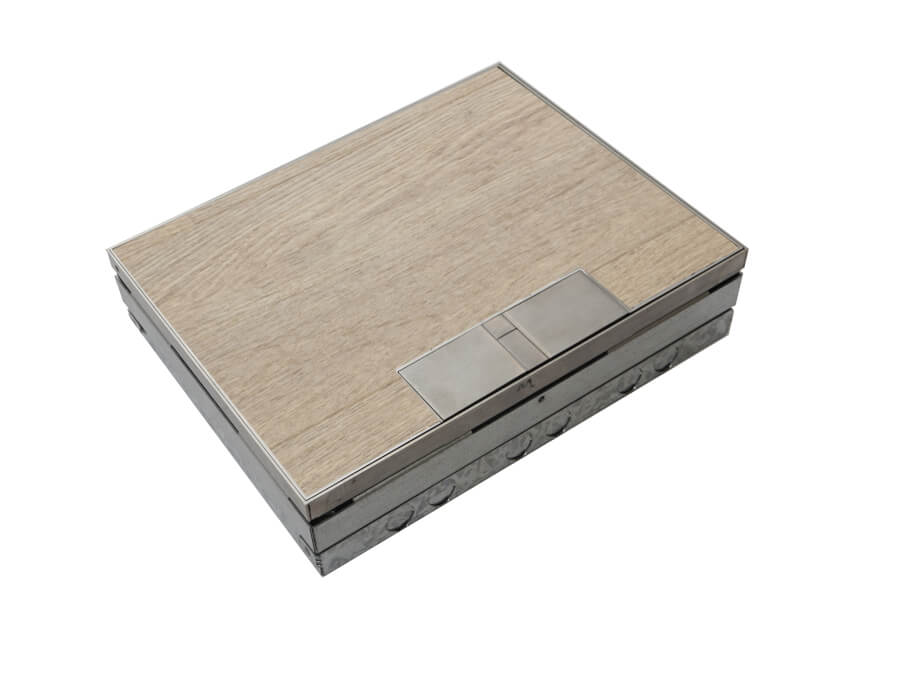
In order to understand the future of the floor box, I feel a brief look back is necessary. It’s hard to imagine that the first floor-socket box was patented in 1911, over a hundred years ago, by a gentleman named Harry Blissing. Blissing’s original name for his revolutionary product was ‘The Stage Pocket’; he described it as “a floor box, within it a socket, said socket carrying an inclined flange at its mouth, said socket containing plug contacts within it so as to be operational through the mouth”.
It is quite telling that the need for this product has existed for more than a century. In a post Victorian New York City, a vast amount of workers were crammed into offices with limited room, leading to a simple but effective idea; you can raise employee efficiency and maximise use of space by including sockets under each desk or in the centre of the room.
With great power sockets comes great responsibility to be practical with living space
We can all agree that visible wires are a tripping hazard and can seem unsightly, making the floor socket a modern problem-solving tool as well as an easy saver of space. Architects benefit from the smarter use of space, no longer chained to the four walls of a room for electrical outlets but free to manoeuvre their televisions, appliances and charging devices without restriction. This has resulted in a surge of floor boxes being sold to architects and interior designers of residential homes with many opting for discreet power outlets for a minimalist look.
This has led to a surge of people wanting floor sockets more than they actually need them; more project managers are asking for floor outlets simply as a trendy style choice, rather than a practical necessity.
Increase in demand
The necessity for floor socket outlets has never been more prevalent and there are many factors supporting this increase in demand. We’ve seen a huge amount of government expenditure on infrastructure of non-residential buildings in the last three years. The increase of offices, commercial and public space has led to dramatically improved UK floor box sales due to rising popularity of floor sockets in these types of building projects.
Overseas, increased investment in the APAC industries, predominantly in China, has seen the need for floor boxes soar to their highest levels to match new organisations and workspace. Floor boxes under every desk have become a common requirement, as have floor outlet sockets in public spaces like airports and retail stores across the globe.
What will the future look like?
Last year saw over 13.5 million square feet of office space in development in Central London alone (that amount of space could comfortably fit 33 Wembley Stadiums). Not only was this a 12% increase on the previous year, the average size of building projects has increased from about 80,000 to 96,000 square feet. Alongside these new buildings and the vast amount of projects that comes with them, frequent large-scale refurbishments are also having a very positive effect on national floor box sales.
Where there are new businesses there are new offices, shared work-spaces and fresh opportunities for growth in the floor box industry. This doesn’t even include new schools (over 400 and counting have been built since 2017), refurbishments, public building and residential projects. With an estimated population growth of about 3.6 million over the next 10 years, buildings and subsequent projects will be created to accommodate this growth, with each one representing an opportunity for floor sockets in a continually flourishing industry.
Cableduct are the market-leading manufacturer of bespoke, high-quality cable management systems. We are proud floor box, trunking and skirting specialists.
Email: sales@cableductuk.com to discuss large projects with one of our engineers.








